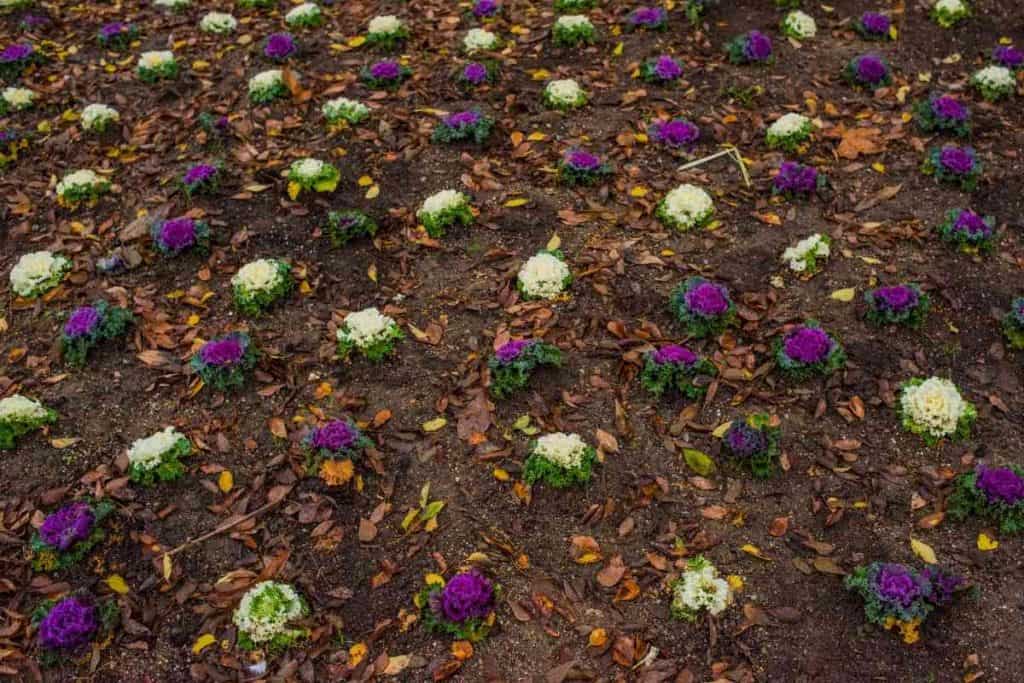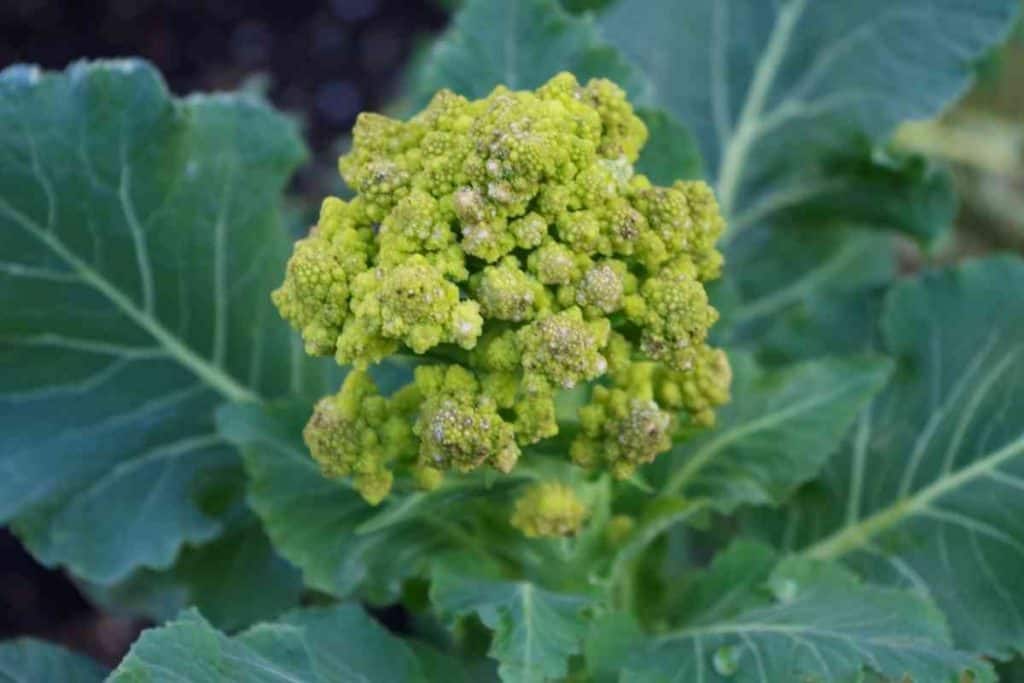Scientifically known as Brassica oleracea var. botrytis, the Cauliflower is a vegetable from the Brassicaceae family and nestled in the middle of a leafy crown.
Also referred to as Cole Crop, the Cauliflower is a cool-weather crop that possesses edible heads, leaves, and stems and contains a high amount of vitamins B, C, and K, Carotene, and fiber.
However, you must have heard that Cauliflowers can be difficult to grow, but that’s just because there are important requirements that you must meet to enable them to grow and produce healthy and pleasing heads.
There are 4 main cauliflower growing stages: germination, seedling, vegetative, and maturation or flowering stages.
Let’s look at their growing stages in detail!
Table of Contents
4 Cauliflower Growing Stages

Below are the 4 key cauliflower growing stages you must know about to prepare you when you want to grow the plant.
Read Also: Is Cauliflower Man Made?
Stage 1: Germination Stage
First of all, Cauliflower seeds have a specific period in which you can plant them; and that is during the spring or fall.
You can grow them inside seed trays or directly in the garden. After planting the seeds, make sure you cover them in a thin layer of soil and keep the soil moist.
Note that seed germination of Cauliflowers is often the first developmental occurrence in the plant’s life cycle.
It often takes between 8 to 10 days for the seeds to germinate and the first leaves to appear in the seedling (cotyledons/seed leaves), then comes the original leaves.
After growing the Cauliflower seeds, it will require sufficient sunlight, moisture, nutrients, and temperature to start proper germination.
Also, its germination process is so complex. Still, the prior knowledge is that it is a molecular process in which mature and viable Cauliflower seeds commence active growth and development.
Stage 2: Seedling Stage
The next growth stage of the Cauliflower after germination is the seedling stage. The seedling stage refers to a sporophyte growing out of a plant embryo from a plant seed. A typical plant seedling consists of three primary parts:
- Embryonic roots are called the radicle.
- Seed leaves are called cotyledons.
- Embryonic shoots are called hypocotyl.
The embryonic roots are the younger parts which are the first main structures that carry and help to absorb nutrients from the surrounding environment into the seedling. The young leaves are the first significant structures that absorb light from the surrounding.
In other words, this stage gives rise to the next stage, which you can find with the expansion and advancement of these main structures into complex structures, otherwise known as vegetative growth.
Scroll down for more details of the third growing stage of the Cauliflower.
Read Also: Stages of Growing Asparagus
Stage 3: Vegetative Stage
The Vegetative Stage of the Cauliflower culminates when the expansion and development of young roots, shoots, and leaves play out. This is a stage where the leaves and roots separate to produce complex structures like stomata, lenticel, and root hairs.
These secondary parts function together to synthesize and supply food and water within the plant system. For example, xylem and phloem are structures in plants like Cauliflower, which helps distribute food and water from the synthetic point to the areas required.
At the vegetative stage of Cauliflower, there’s the formation of heads, and the overall Cauliflower will develop in height and width. If you are planting a Cauliflower, constant and regular water and weeding are required to supplement it during this growing stage.
However, you should avoid feeding your Cauliflower with fertilizers containing a high amount of nitrogen, as nitrogen can prevent your plant from growing heads.
Stage 4: Maturation or Flowering Stage

Also known as the maturation stage, the flowering stage in Cauliflower is when Cauliflower starts producing buds and flowers.
In the aftermath of the vegetative stage, Cauliflower begins to grow flowers. The formation of flowers is one of the primary features of higher plants and signifies plants’ reproduction.
Therefore, Cauliflower has matured enough at this flowering stage and developed every vital part needed for reproduction. After the flowering of the plant comes the production of seeds, which you will subsequently harvest.
This is surely the final growth event in the life cycle of Cauliflower. If you wish to begin the process, you need to grow cauliflower from scraps, seeds, or grow from cuttings.
Frequently Asked Questions
How Long Will It Take Cauliflower to Flower?
Well, it is quite simple. The timing factor often depends on the types of Cauliflower you are growing. For instance, some Cauliflowers may take a longer time than the rest to bloom. However, generally, you can expect your Cauliflower to start flowering from 50 days or thereabouts (it could be less than that).
Why Are Some of My Cauliflowers Not Flowering?
Your Cauliflower is not flowering because you waited too long before you started harvesting. In other words, it can be bolted, and rather than producing the head, it will only concentrate on growing seeds. Therefore, to avoid your Cauliflower from blooming, you must ensure harvesting of the vegetable is carried out early.
How Many Times Does Cauliflower Bloom?
Since the Cauliflower is a biennial plant (life cycle of two years), it can flower and produce seeds annually until the completion of its life cycle, after which it will finally die. This is as long as you do not harvest after its first production year.
Read Also: Different Eggplant Growing Stages




